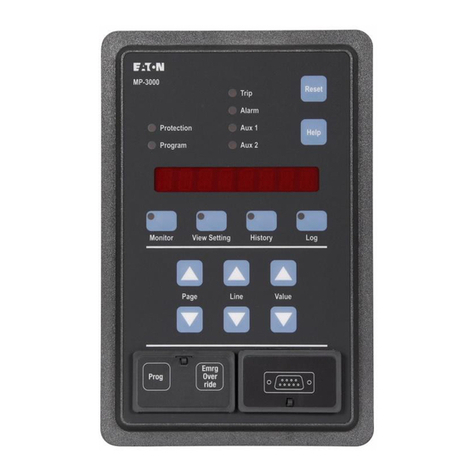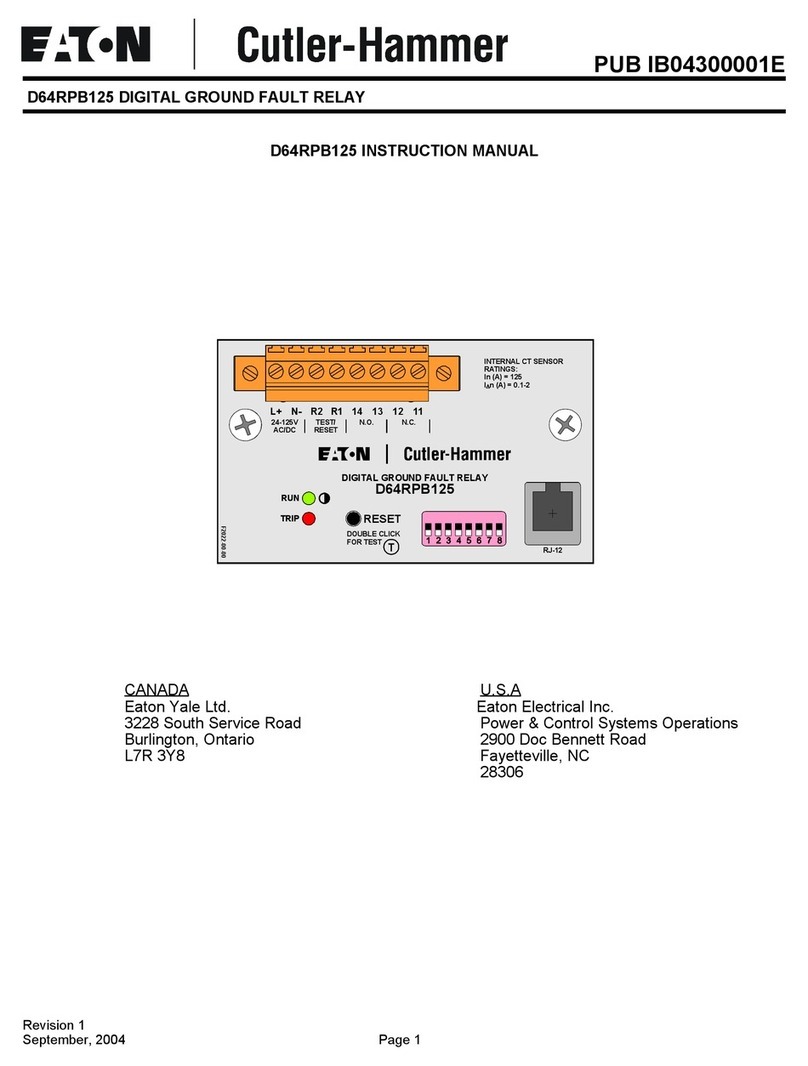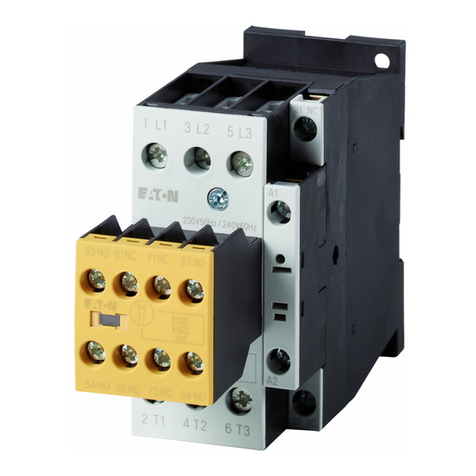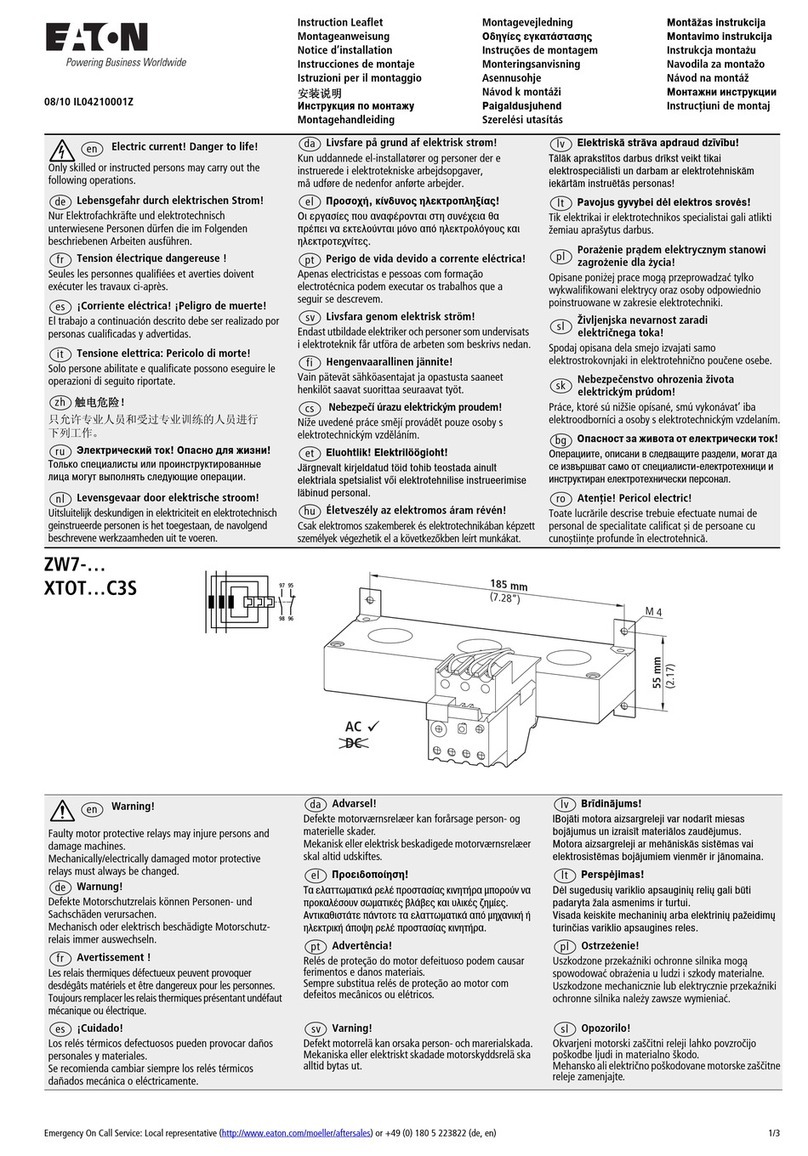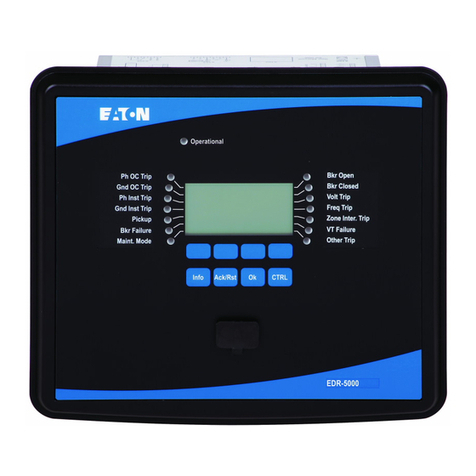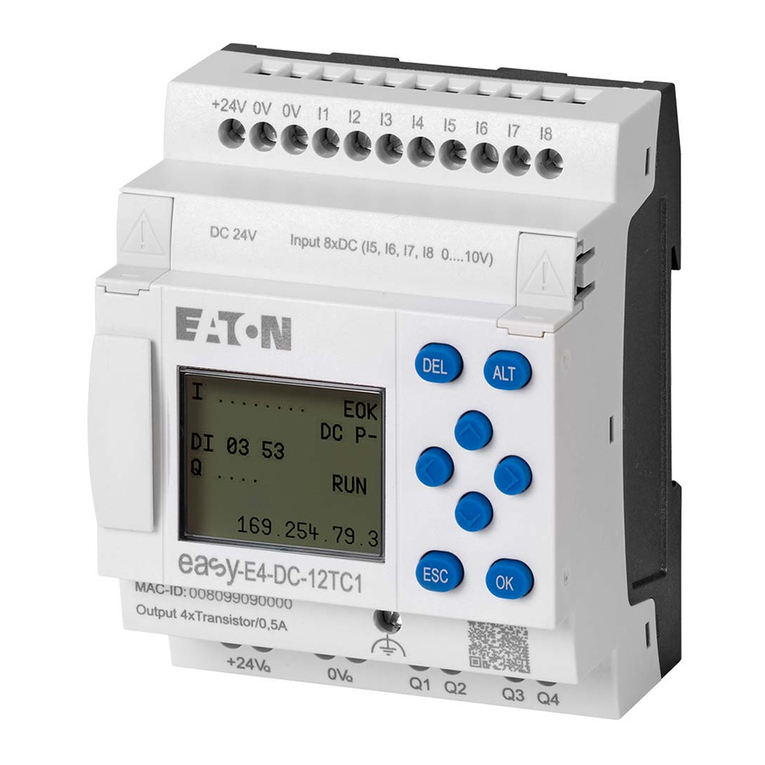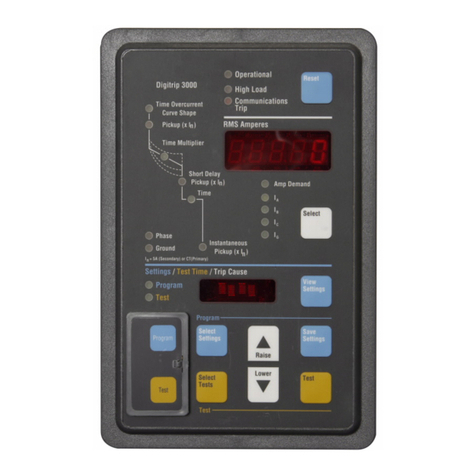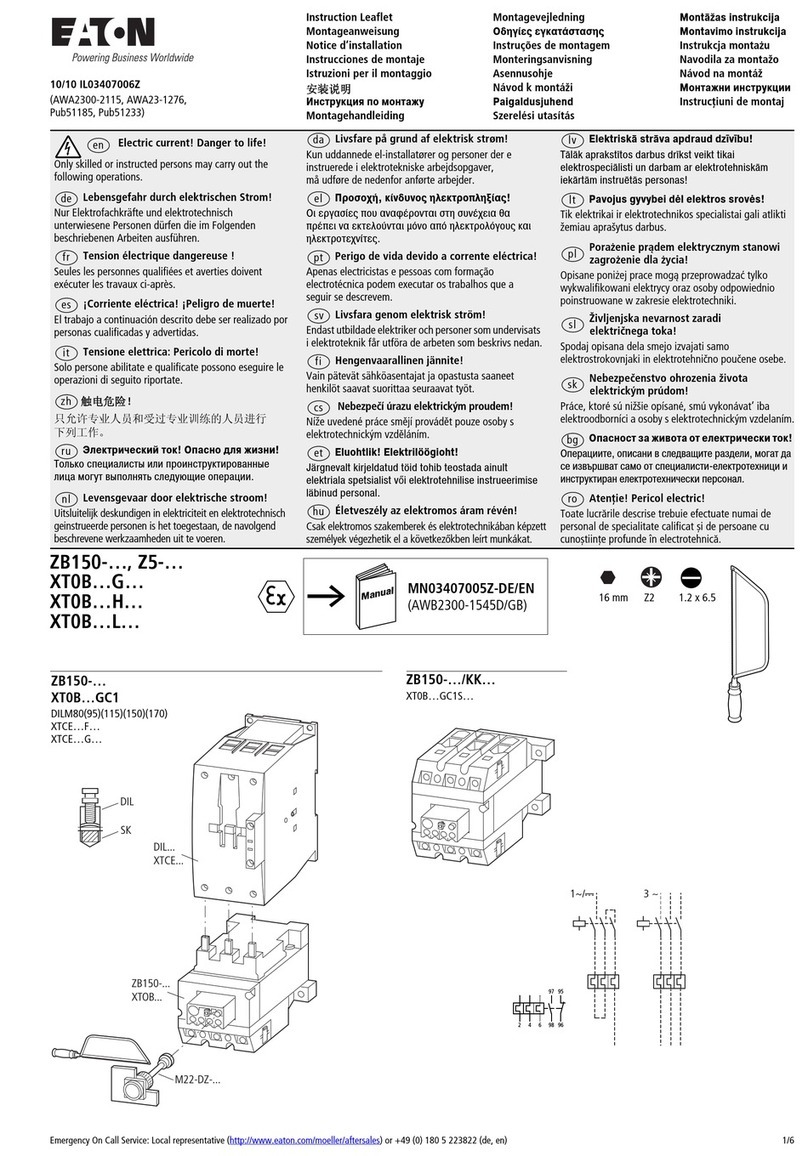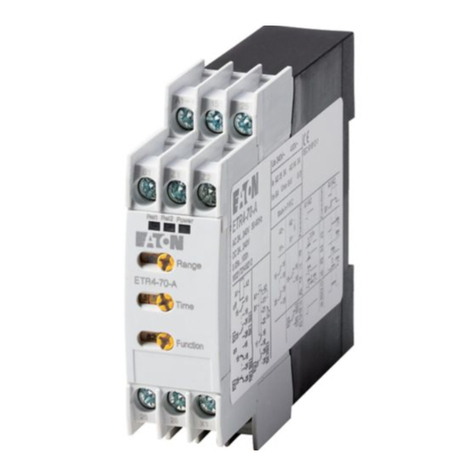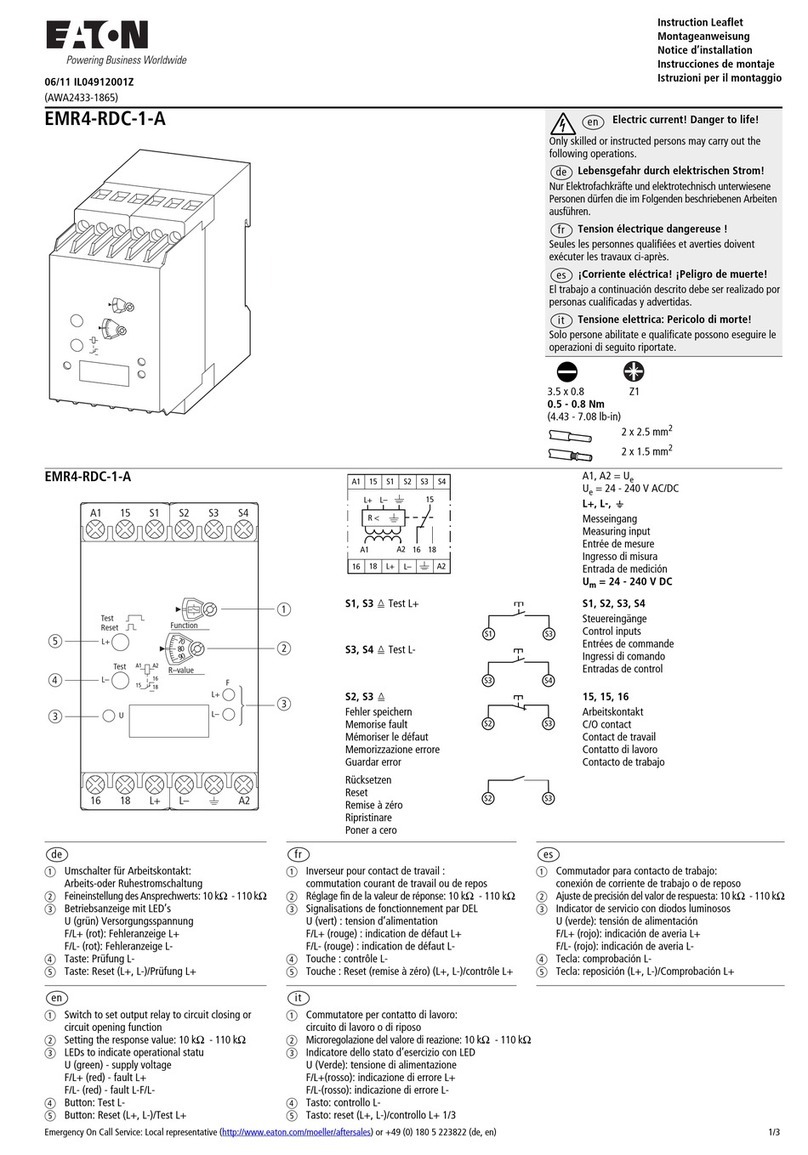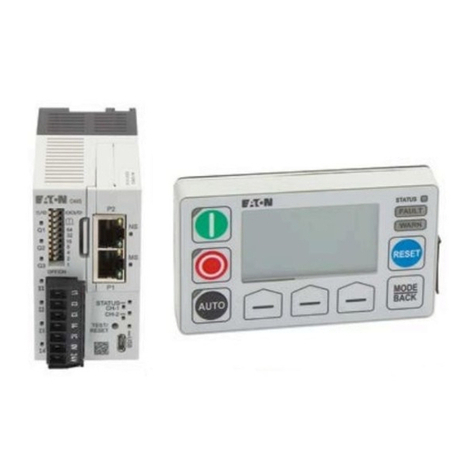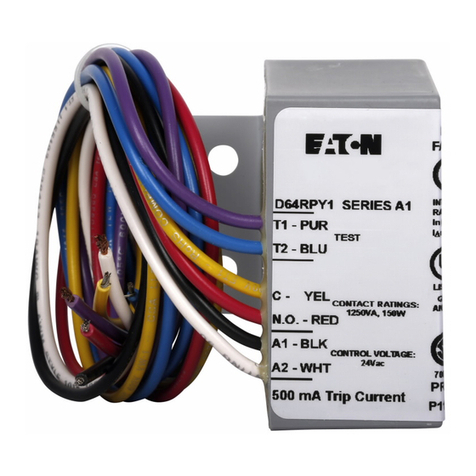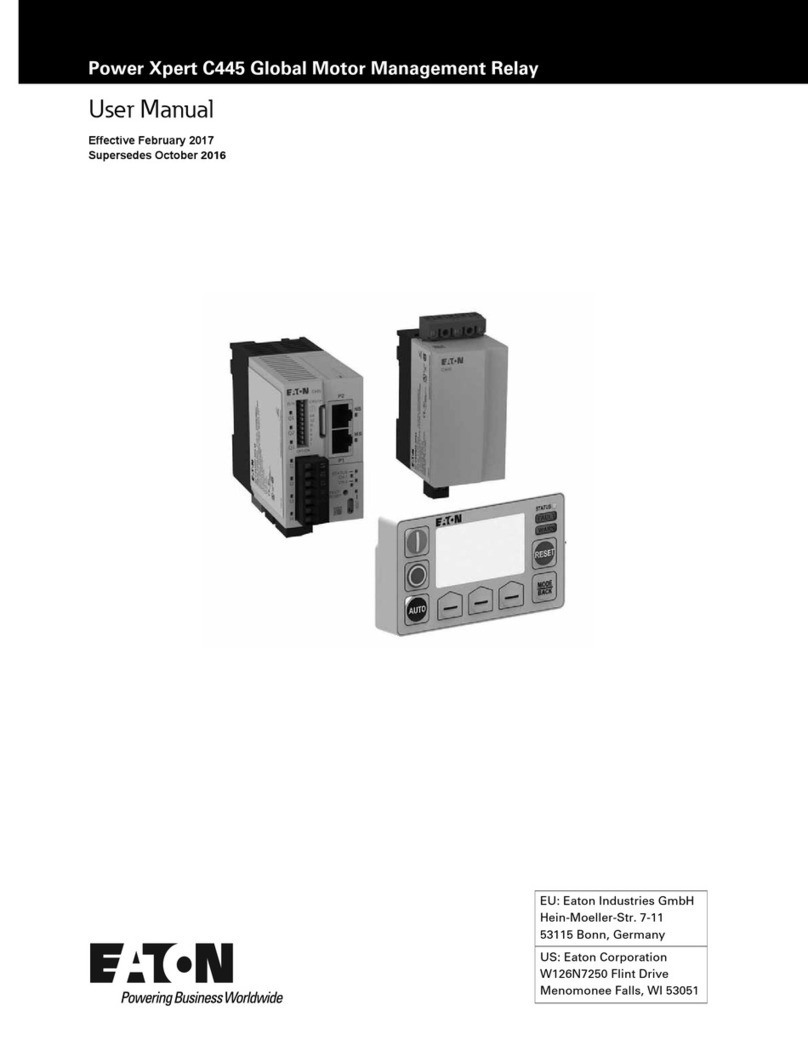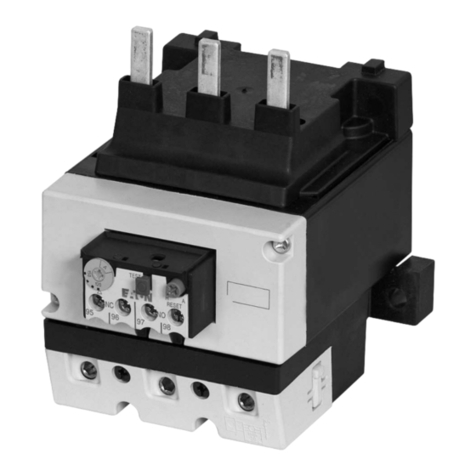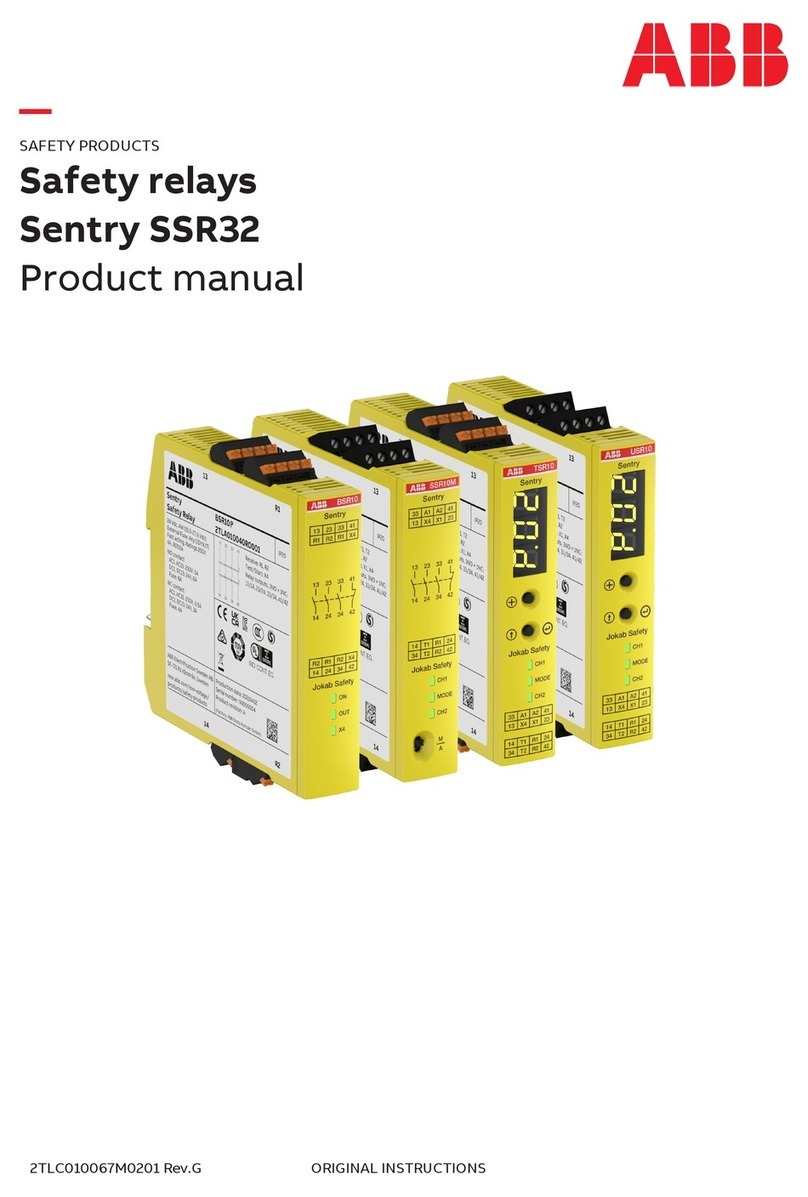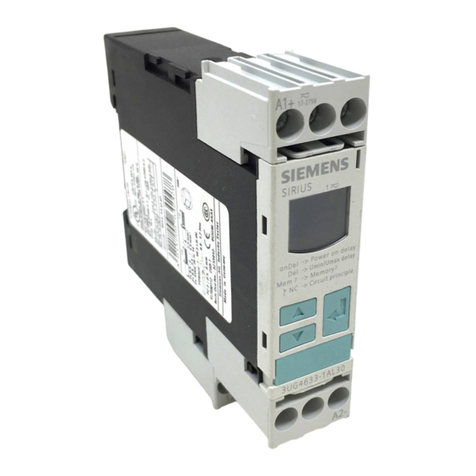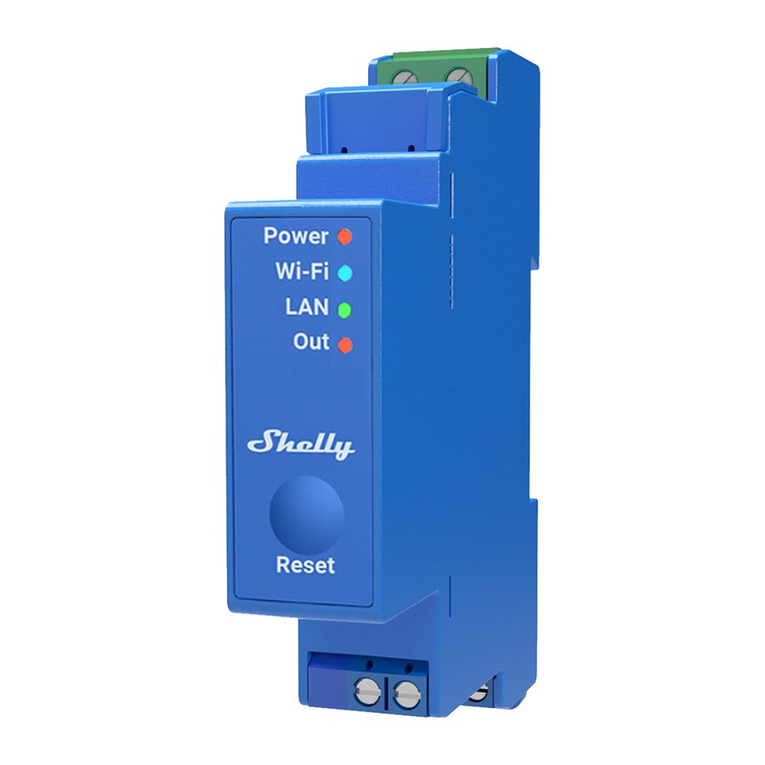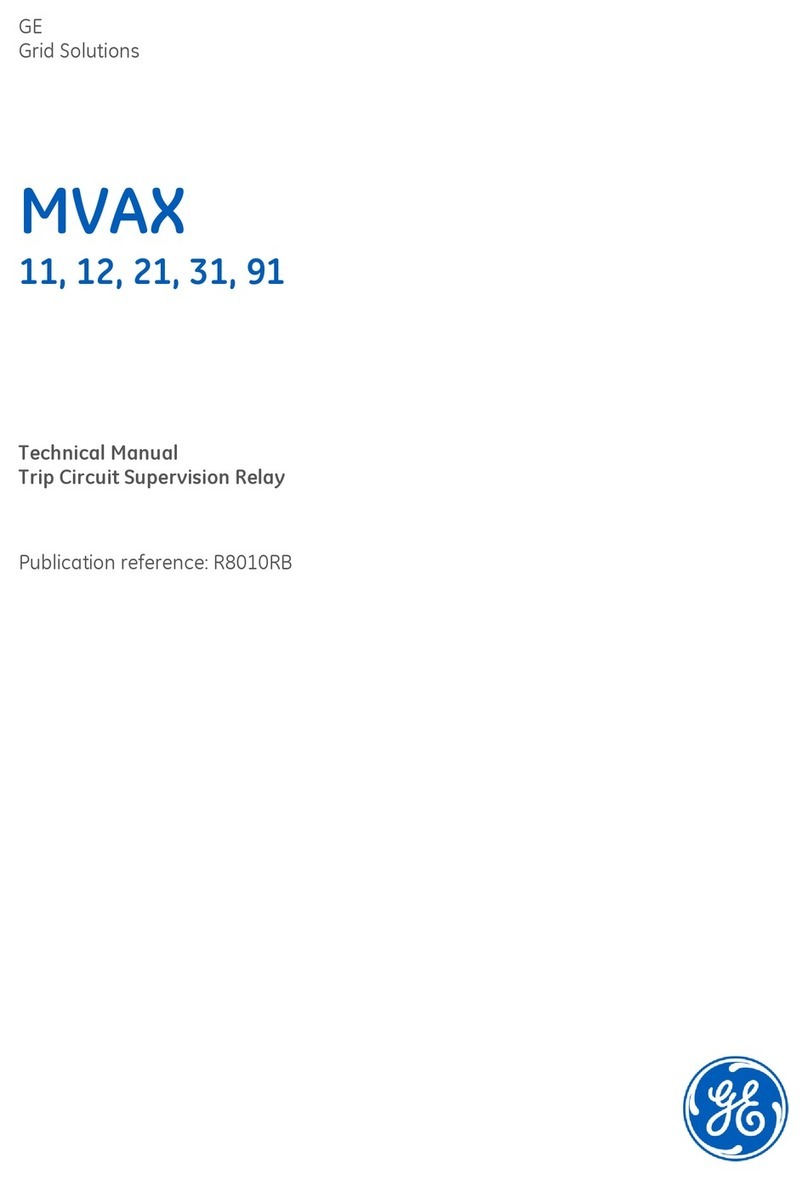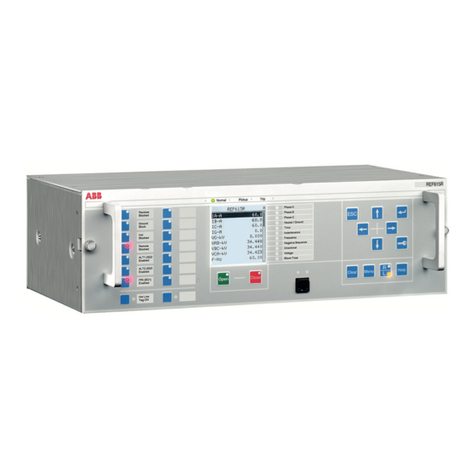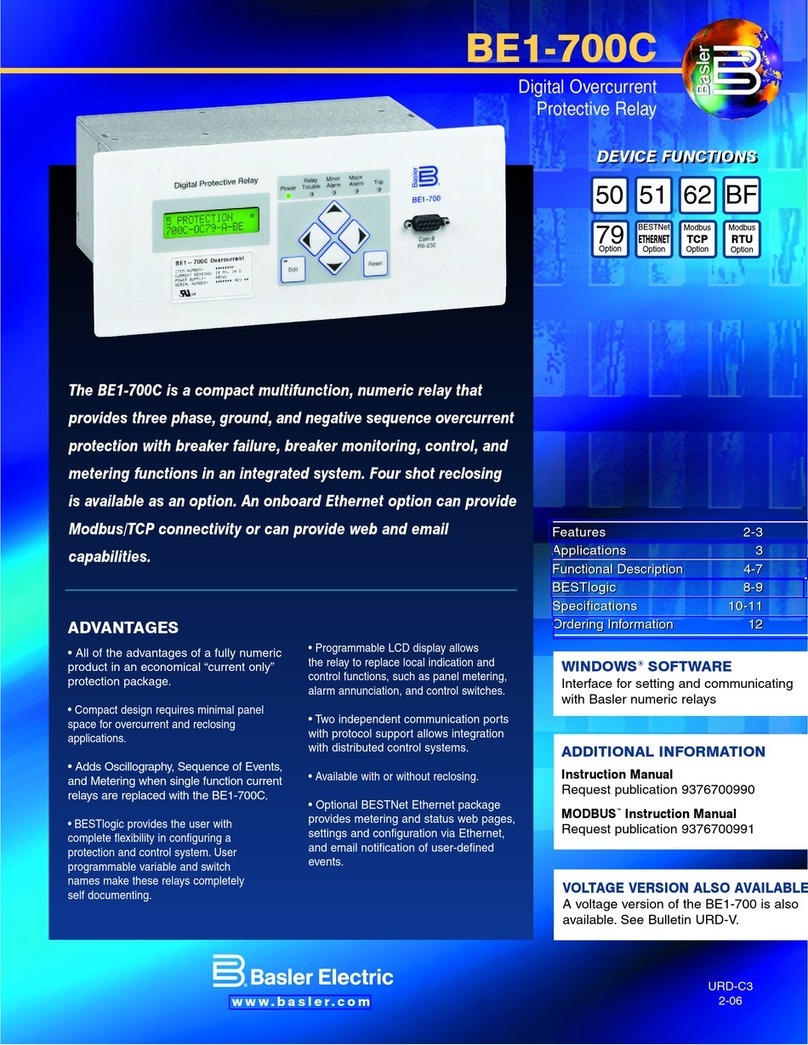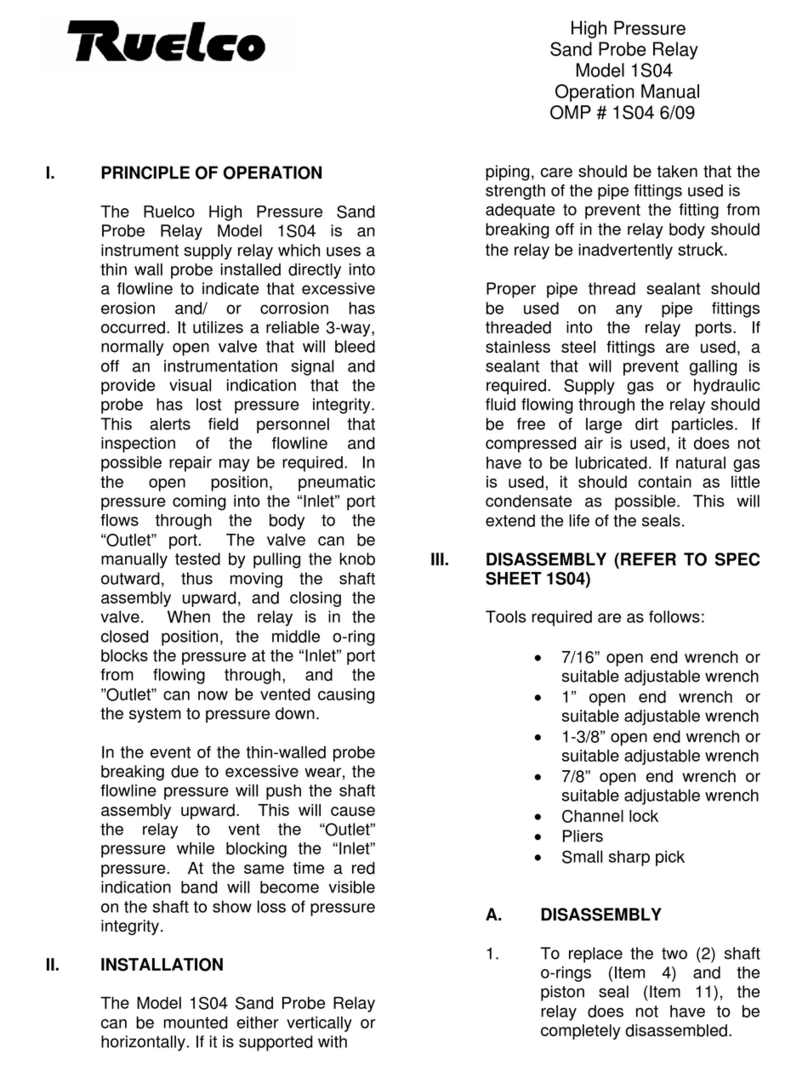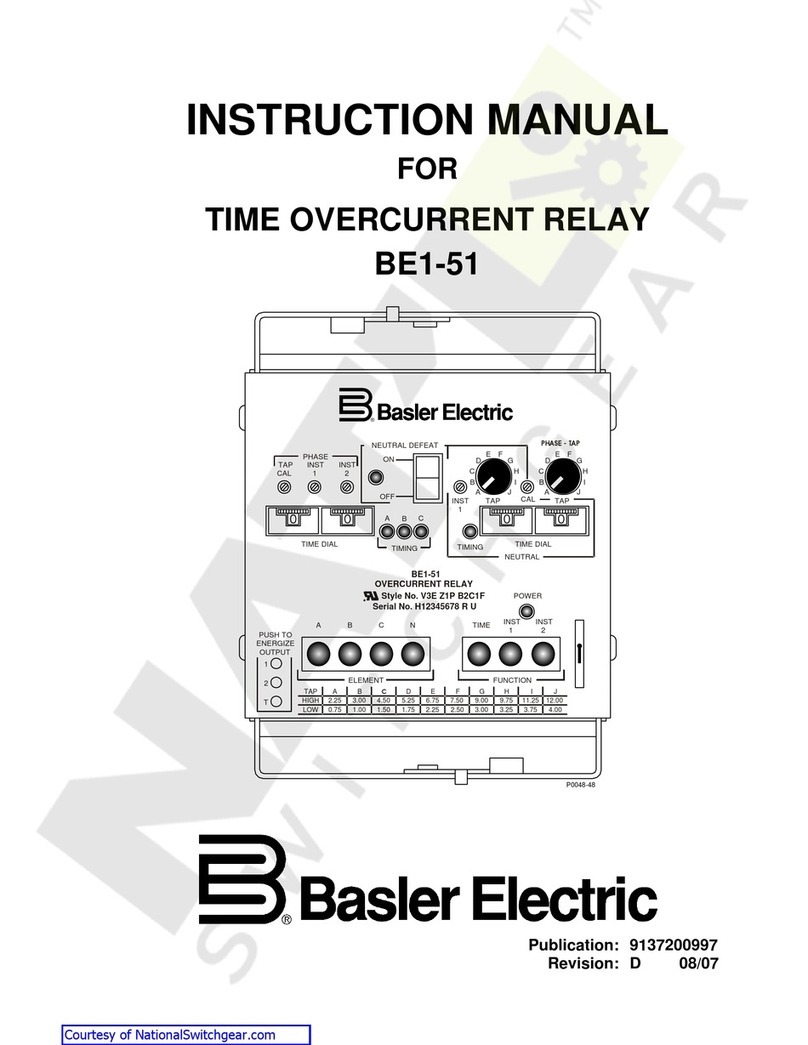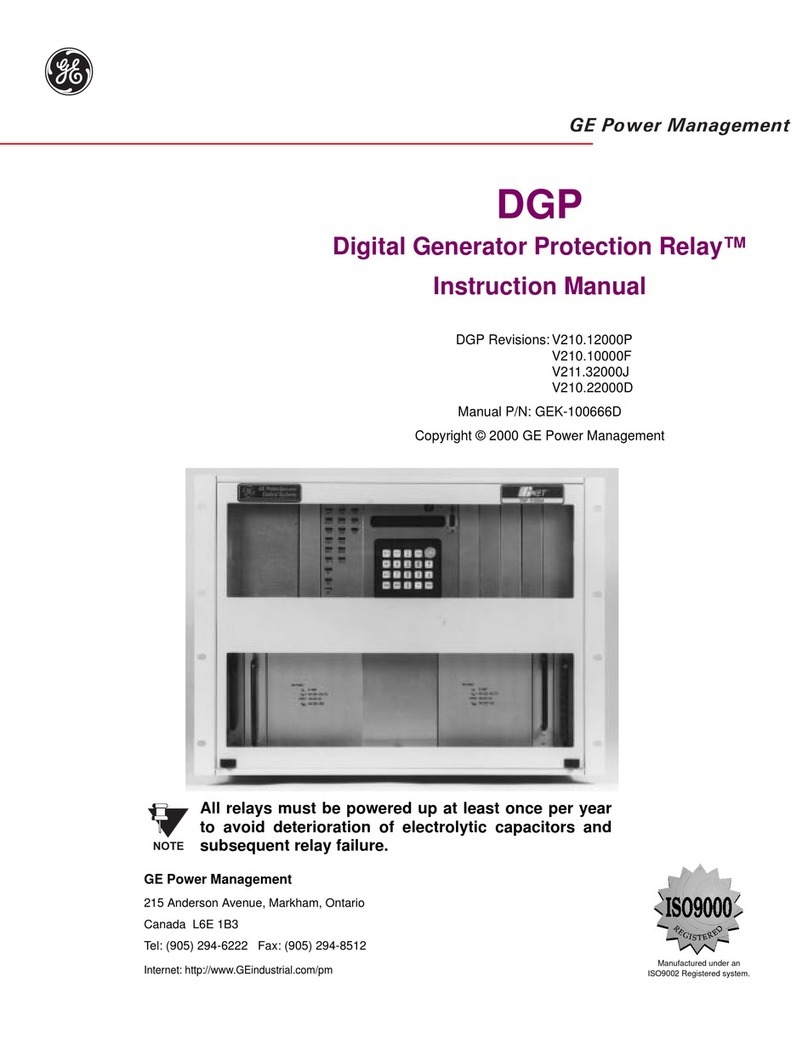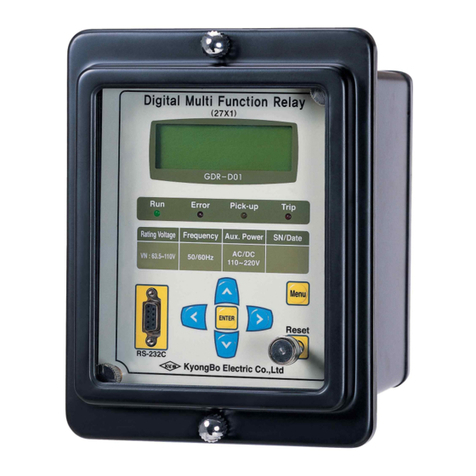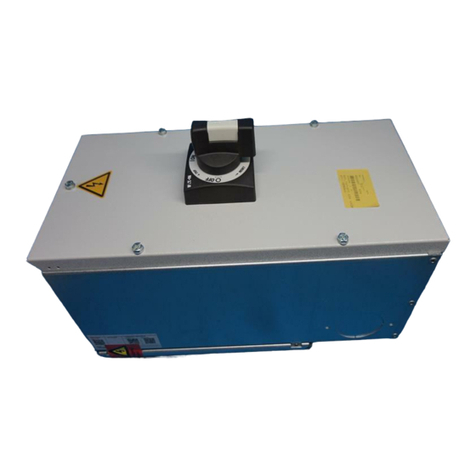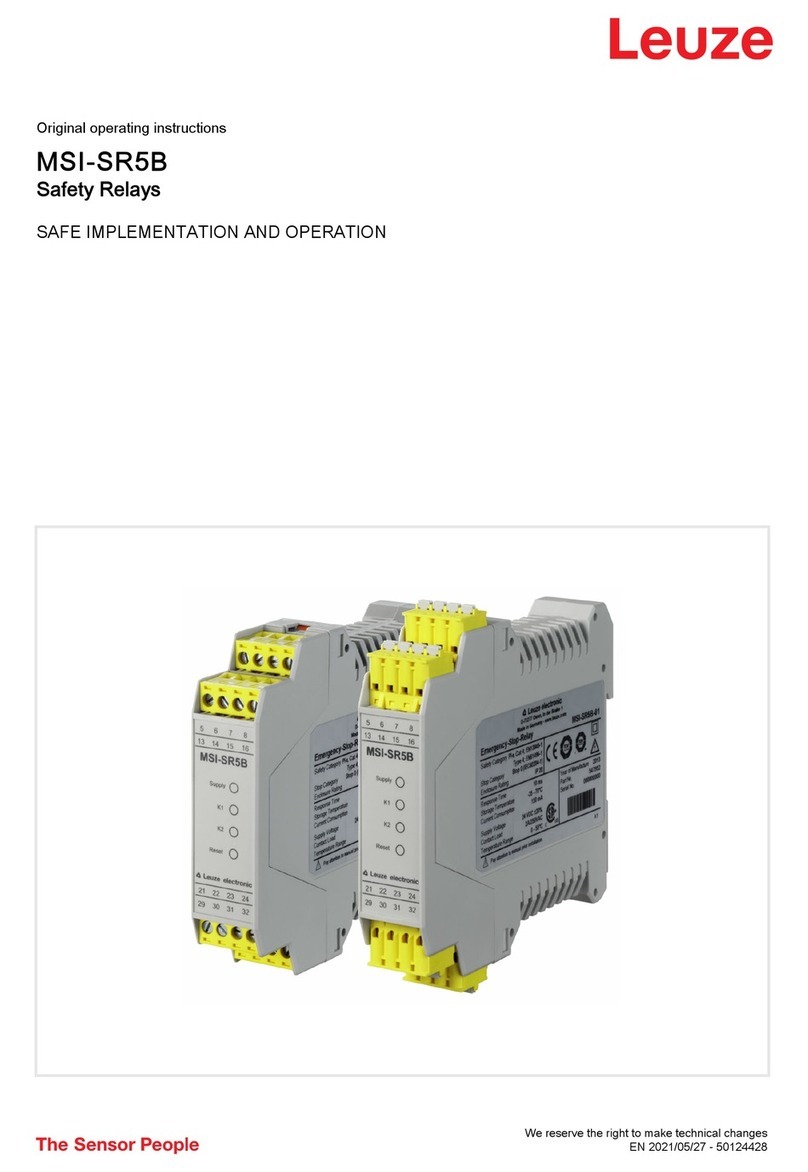
PUB 50413
D64RPBH13 SERIES B1 GROUND FAULT RELAY
Revision 2
September, 2009 Page 3
1. GENERAL DESCRIPTION
The D64RPBH13 is a ground fault relay for use on solidly grounded or resistance grounded systems over a
frequency range of 40 - 200 Hz. This innovative digital electronic relay measures ground fault current using
either, a special Eaton’s Cutler-Hammer C311CT zero sequence current transformer with a turns ratio of
10000:1 or, the standard family of C311CT zero sequence current transformers with a turns ratio of 500:1.
Either C311CT is connected to the CT input terminals CT1 & CT2
The D64RPBH13 reacts to alternating current only and will reject direct current signals. It will maintain accuracy
over a frequency range of 40 to 200 Hz., making it suitable for variable frequency drive applications.
The ground fault current trip level is set on 5 DIPswitches in 25 discrete steps. The range is 50 Amps - 1200
Amps when using the 10,000:1 CTs and 2.5 Amps – 60 Amps when using the 500:1 CTs. The trip level can be
set just above the charging current1. Any deterioration in the circuit will trip the relay. This also permits scheduled
field testing of the relay (by lowering the trip level).
1 The capacitance-to-ground charging current on a system will vary depending on: the overall length of
the cables; the types of loads; the quality of insulation on the phase conductors; the surrounding
equipment grounding, cable trays, junction boxes, etc.; and, the type of transformer.
A "Rule-of-Thumb" for systems 600 Volts and lower: The charging current is 0.5 Amps per 1000 kVA of
transformer capacity.
The response time on ground fault trip is set on 4 DIPswitches. The range is 25 ms - 1.00 second in 14 discrete
steps.
The D64RPBH13 is suitable for use on Service Protection Equipment applications.
The Trip INHIBIT function can be Enabled or Disabled by means of a front accessible DIPswitch. The inhibit
level is related to the ground fault trip level setting over a range of 200 Amps to 2000 amps when using the
10,000:1 CTs and 10 Amps – 100 Amps when using the 500:1 CTs. With Inhibit Enabled, if the ground fault
current exceeds the inhibit level, the output circuit breaker trip will be inhibited until the ground fault current drops
below the inhibit level.
A voltage-operated circuit breaker with an external toggle handle is used as the output device. It provides a
visual indication of the status of its output contacts. The contacts are Form "C" N.O. - N.C. voltage free. They
may be used to operate the upstream protective device and indicate a failure of the system. The circuit breaker
can be set to operate in the failsafe or the non-failsafe mode by means of a front accessible DIPswitch. The
circuit breaker mechanism is trip free (cannot be closed if a ground fault is being sensed by the relay). Manual
reset of the circuit breaker toggle will restore the output contacts to the normal state.
The circuit breaker toggle in the Tripped position indicates that the D64RPBH13 has sensed a ground fault
current higher than the trip level for a period longer than the trip time and that the output contacts have operated,
or, if in the Failsafe mode, it will also indicate that the control voltage has been removed from terminals L+ & N-.
The D64RPBH13 constantly supervises the connection to the external CT. Open circuits are detected and will
cause a trip. Please note that the D64RPBH13 does not employ any DC injection to implement this since even
small DC current sent through the secondary windings of a CT can bias its core enough to shift the trip point
outside specification on sensitive settings. For the CT supervision to work, either the special Eaton’s Cutler-
Hammer C311CT zero sequence current transformer with a turns ratio of 10000:1, or the standard family of
Series A2 C311CT zero sequence current transformers with a turns ratio of 500:1 must be installed, as specified
in section 3.2.
A Cover mounted RESET button is standard. A green RUN LED shows correct operation by slowly flashing (1 s
on/ 1 s off) when control voltage is applied to terminals L+ & N-. A red LED shows short 0.25 s flashes as a code
indicating the cause of trip: 1 flash every few seconds – ground fault; 2 consecutive flashes – Inhibit Backup; 4
consecutive flashes – CT circuit open; 5 consecutive flashes – Control Voltage lost in Failsafe mode (See
Section 2.6 for explanation of memory feature); continuous consecutive flashes – Trip Failed.
